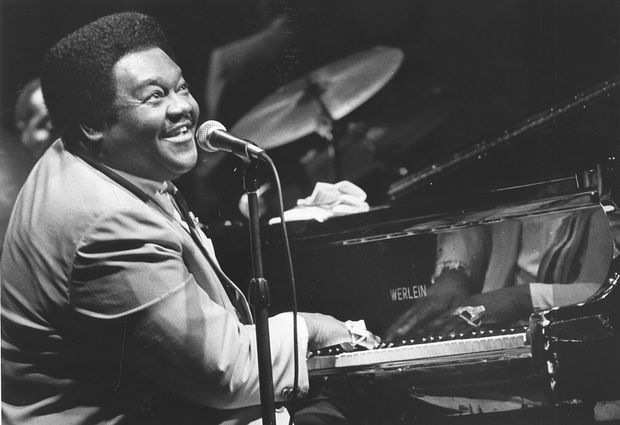
The Enduring Charm of a New Orleans Riff: Fats Domino’s “Ain’t That a Shame”
A lament of unrequited love, wrapped in the irresistible rhythms of early rock and roll, “Ain’t That a Shame” by Fats Domino wasn’t just a hit; it was a cultural touchstone. Reaching number 10 on the Billboard charts upon its release in 1955, the song cemented Domino’s place as a foundational figure in the burgeoning genre. But more than just chart success, “Ain’t That a Shame” embodies the spirit of a generation poised on the edge of a musical revolution, a gentle nudge away from the big band sounds of the past and towards the electrifying future of rock and roll.
Antoine “Fats” Domino Jr., a New Orleans native with a jovial stage presence and an unmatched talent for boogie-woogie piano, had already made a name for himself in the local music scene. His distinctive style, a blend of blues, rhythm and blues, and a touch of Caribbean flavor, was perfectly suited to the changing tastes of the American public. “Ain’t That a Shame,” co-written by Domino and Dave Bartholomew, his longtime collaborator and producer, wasn’t just a song; it was an experience. It was the sound of Saturday night dances, of malt shops and drive-ins, of a youth culture finding its voice.
The story behind the song is as charmingly simple as the tune itself. Domino, ever the observer of everyday life, drew inspiration from the common experience of unrequited affection. The lyrics, straightforward and heartfelt, tell the tale of a man watching his beloved walk away with another, leaving him to lament his misfortune. “Ain’t that a shame,” he croons, his voice filled with a mixture of resignation and playful defiance. It’s a sentiment that resonates across generations, a universal feeling of romantic disappointment made palatable by Domino’s infectious rhythm.
But “Ain’t That a Shame” is more than just a sad song dressed up in a happy beat. It’s a masterclass in musical construction. Domino’s piano playing is, as always, the star of the show. The rolling boogie-woogie bassline, the playful treble melodies, and the subtle rhythmic variations create a sonic tapestry that is both intricate and instantly accessible. The horn section, arranged by Bartholomew, adds layers of texture and depth, punctuating the lyrics with short, sharp bursts of energy. And then there’s Domino’s voice, warm and inviting, with a slight drawl that perfectly captures the laid-back vibe of New Orleans.
The song’s impact extended far beyond the charts. It was a key ingredient in the rock and roll explosion of the mid-1950s, influencing countless artists who followed in Domino’s wake. Elvis Presley, for instance, famously covered the song, further solidifying its place in the rock and roll canon. But even beyond the realm of music, “Ain’t That a Shame” became a symbol of a changing America. It was the sound of a new generation breaking free from the constraints of the past, embracing a more vibrant and inclusive future.
For those of us who remember the days when rock and roll was just beginning to take hold, “Ain’t That a Shame” holds a special place in our hearts. It’s a musical time capsule, transporting us back to a simpler era, a time of innocence and optimism. It’s a reminder of the power of music to capture the spirit of a moment, to give voice to our deepest emotions, and to bring us all together. It’s a song that, even after all these years, still makes us want to get up and dance. And really, isn’t that what music is all about?